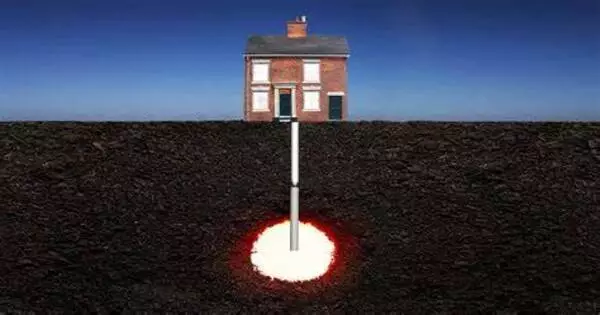Geothermal heating is the use of geothermal energy directly for heating purposes. Since the Paleolithic era, humans have used geothermal heat in this manner. It’s a renewable energy technology that uses heat stored beneath the Earth’s surface to heat and, in some cases, cool buildings and other structures.
In 2004, approximately seventy countries directly used a total of 270 PJ of geothermal heating. As of 2007, the world had 28 GW of geothermal heating capacity installed, accounting for 0.07% of total primary energy consumption. Thermal efficiency is high because no energy conversion is required, but capacity factors are typically low (around 20%) because heat is mostly required in the winter. This heat originates from the natural heat flow of the Earth’s interior and is transferred to the surface through various processes.
Geothermal energy is derived from the heat retained within the Earth since its formation, radioactive decay of minerals, and solar energy absorbed at the surface. The majority of high-temperature geothermal heat is harvested near tectonic plate boundaries, where volcanic activity rises close to the Earth’s surface. Ground and groundwater with temperatures higher than the application’s target temperature can be found in these areas. Even cold ground, however, contains heat. The undisturbed ground temperature is consistently at the mean annual air temperature below 6 metres (20 ft), and this heat can be extracted using a ground source heat pump.
Benefits of Geothermal Heating:
- Highly efficient: Geothermal systems are generally more efficient than traditional heating systems, as they rely on stable underground temperatures instead of fluctuating air temperatures.
- Renewable: The Earth’s heat is a renewable resource, and geothermal systems produce minimal greenhouse gas emissions compared to fossil fuel-based systems.
- Reduced energy bills: Geothermal systems can significantly lower energy bills due to their efficiency and use of renewable energy.
- Long lifespan: Geothermal systems tend to have longer lifespans than conventional HVAC systems, with some components lasting up to 25 years or more.
- Low maintenance: Geothermal systems require less maintenance compared to other heating systems.
Challenges and Considerations:
- Installation costs: Initial installation costs can be higher than traditional systems due to the need for drilling or excavation.
- Site-specific: The feasibility of geothermal heating depends on the geological characteristics of the site.
- Retrofitting: Retrofitting an existing building with a geothermal system can be more complex than installing one in a new construction.
- Regulatory considerations: Local regulations and permits might impact the feasibility and design of a geothermal system.
















